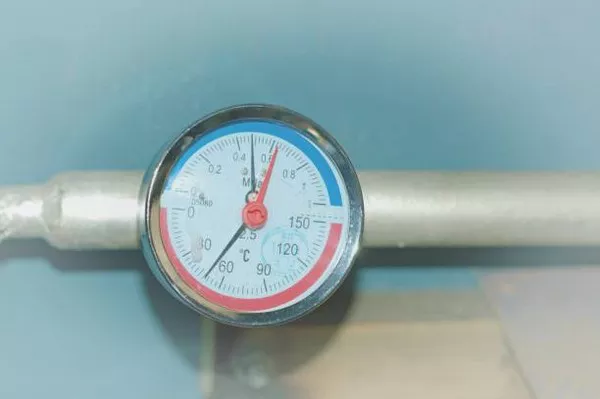The barometer, an essential instrument in meteorology, measures atmospheric pressure, providing crucial data for weather forecasting and scientific research. Traditionally, mercury has been the fluid of choice for barometers, but water is sometimes considered as an alternative. Despite water’s availability and non-toxic nature, it is fundamentally unsuitable for use in barometers for several significant reasons. This article explores these reasons in detail, delving into the physical, chemical, and practical aspects that render water an impractical choice for barometric measurements.
1. Density and Practicality
The primary reason water is unsuitable for barometers lies in its density. Mercury, with a density of approximately 13.6 grams per cubic centimeter (g/cm³), is significantly denser than water, which has a density of about 1 g/cm³. This difference in density directly impacts the height of the liquid column required to measure atmospheric pressure.
Atmospheric pressure at sea level is approximately 1013 millibars (mb), equivalent to 760 millimeters (mm) of mercury. Due to the lower density of water, a barometer using water would require a column height of approximately 10.3 meters (m) to measure the same pressure. This height is impractical for most applications, making it challenging to house and stabilize such a tall instrument in everyday settings.
2. Vapor Pressure
Another critical factor is water’s higher vapor pressure compared to mercury. Vapor pressure is the pressure exerted by a vapor in equilibrium with its liquid phase at a given temperature. Water’s vapor pressure is significantly higher, which means it evaporates more readily at room temperature.
In a barometric setup, this evaporation can cause significant inaccuracies. As water evaporates inside the barometer, it creates water vapor that exerts additional pressure within the column. This added pressure can falsely elevate the height of the water column, leading to erroneous readings of atmospheric pressure. Mercury, on the other hand, has a very low vapor pressure, reducing the risk of such inaccuracies and ensuring more reliable measurements.
3. Temperature Sensitivity
Water is also more sensitive to temperature changes than mercury. The volume of water changes considerably with temperature fluctuations, which can lead to inconsistent readings in a barometer. This thermal expansion and contraction make it difficult to maintain accurate measurements unless the barometer is kept in a strictly controlled temperature environment.
Mercury’s coefficient of thermal expansion is much lower, meaning it is less affected by temperature changes. This property makes mercury-filled barometers more reliable for consistent atmospheric pressure readings across a range of temperatures.
4. Adhesion and Cohesion
The adhesive and cohesive properties of water further complicate its use in barometers. Water tends to adhere to the glass surface of the barometer tube, creating a concave meniscus. This meniscus can be difficult to read accurately, adding another layer of complexity to obtaining precise measurements.
Mercury, by contrast, forms a convex meniscus due to its cohesive forces being stronger than its adhesive forces with glass. This convex meniscus is easier to read and does not significantly affect the accuracy of the measurement.
5. Risk of Contamination and Maintenance
Using water in a barometer introduces the risk of biological contamination. Water is an ideal medium for the growth of microorganisms, algae, and mold, especially in an open system. This growth can obstruct the tube, affect the water’s clarity, and alter its physical properties, leading to inaccurate readings.
Moreover, maintaining a water-based barometer involves frequent cleaning and refilling to prevent such contamination, increasing the maintenance burden. Mercury, being a toxic substance, does not support microbial life, and its barometers require far less frequent maintenance.
6. Environmental and Health Considerations
While water is non-toxic and environmentally friendly, the impracticalities mentioned above often overshadow these benefits in the context of barometric use. Although mercury is hazardous, proper handling and containment in a barometer mitigate environmental and health risks. Modern mercury barometers are designed to minimize mercury exposure, ensuring safe use.
7. Historical Context and Technological Advances
Historically, mercury has been the preferred fluid since Evangelista Torricelli’s invention of the barometer in the 17th century. The use of mercury allowed for a compact and practical design that quickly became the standard for scientific and meteorological use.
With technological advances, digital and aneroid barometers, which do not rely on liquid columns, have become more prevalent. These modern instruments offer high accuracy, ease of use, and portability, further diminishing the need to consider alternatives like water for traditional liquid barometers.
See Also DOES BAROMETRIC PRESSURE AFFECT YOU INSIDE?
Conclusion
In conclusion, water, despite its abundance and non-toxic nature, is fundamentally unsuitable for use in barometers due to several key reasons. Its low density would necessitate an impractically tall column, while its high vapor pressure, temperature sensitivity, and problematic adhesive properties further complicate its use. Additionally, water’s susceptibility to contamination and the consequent maintenance requirements make it an impractical choice for reliable atmospheric pressure measurement.
Mercury remains the fluid of choice for traditional liquid barometers due to its high density, low vapor pressure, and stable thermal properties. However, with the advent of digital and aneroid barometers, the reliance on mercury is decreasing, offering safer and more convenient alternatives for modern meteorological and scientific applications.
Understanding these nuances underscores the importance of selecting appropriate materials and technologies in scientific instruments, ensuring accuracy, reliability, and practicality in atmospheric pressure measurement.

